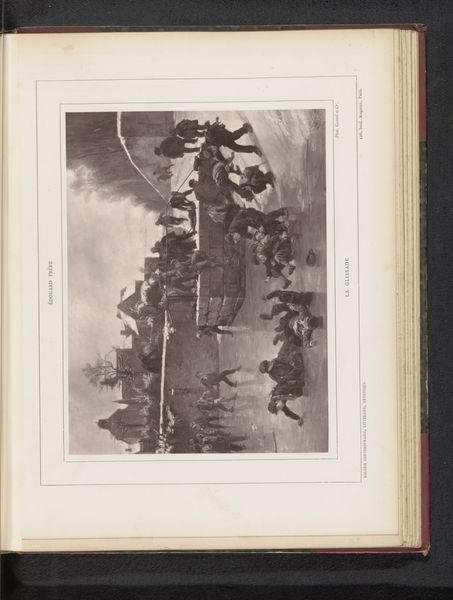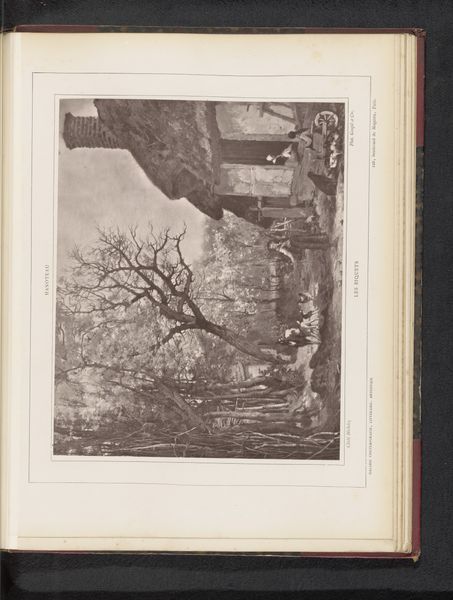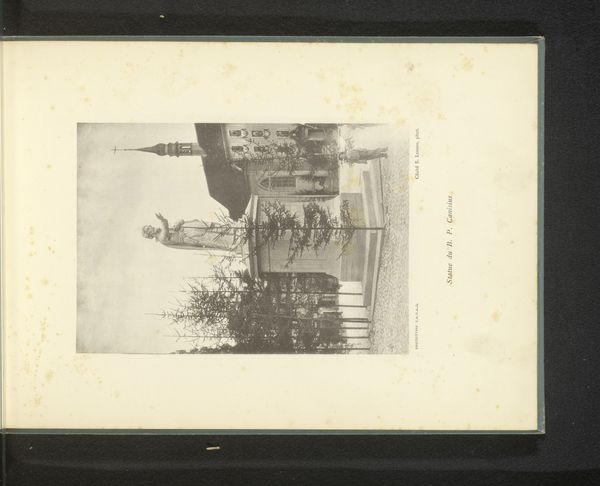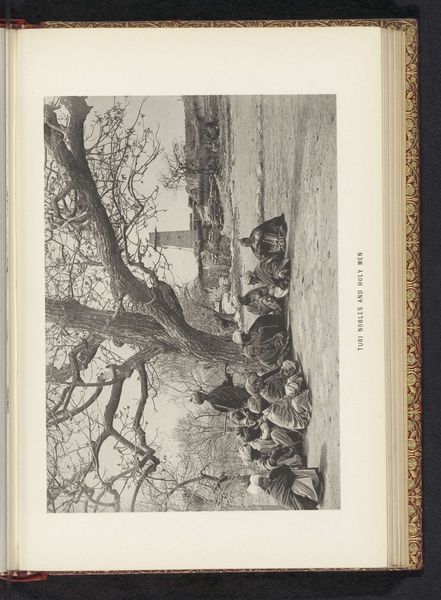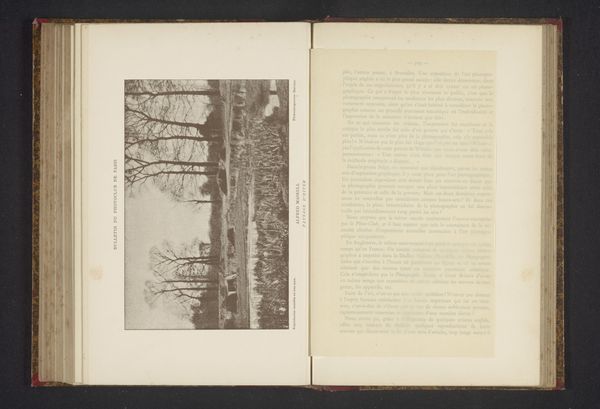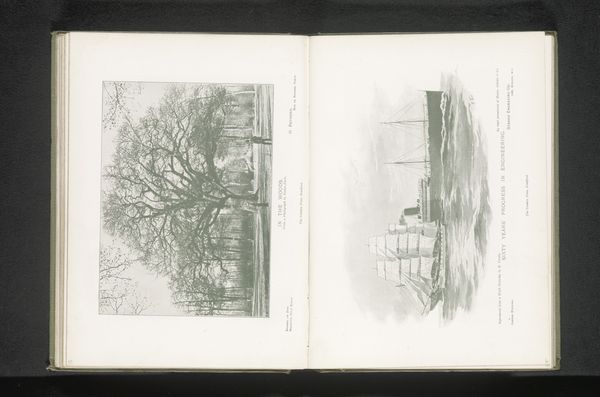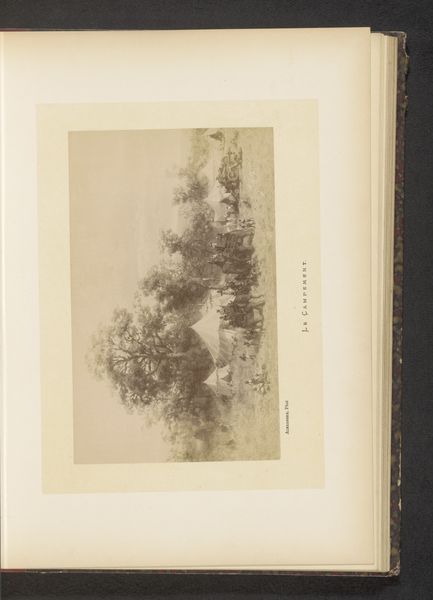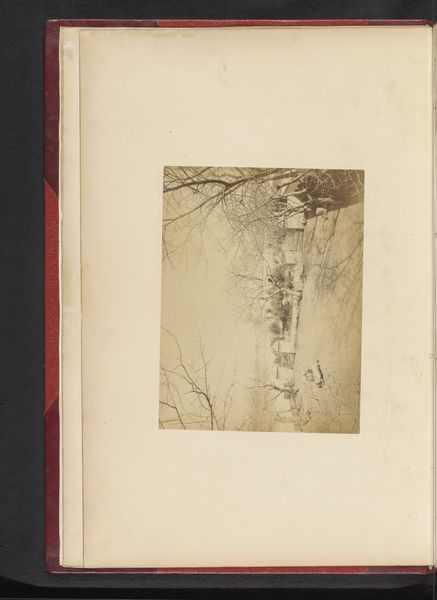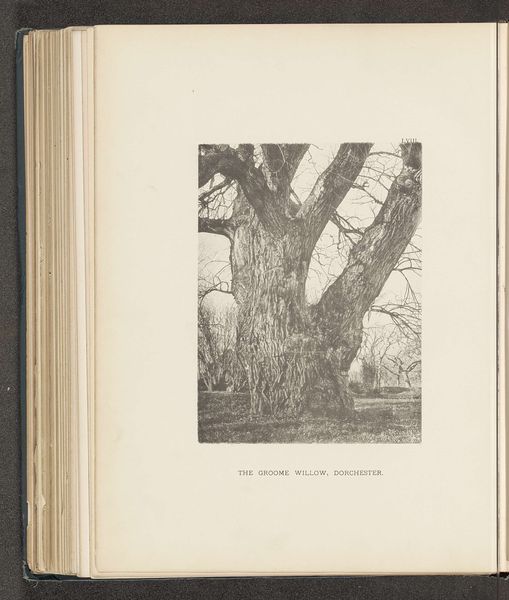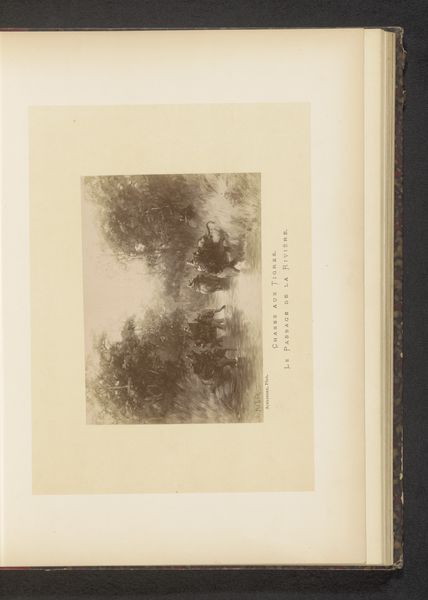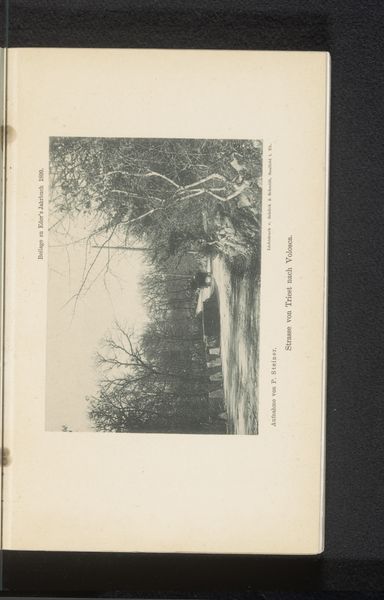
Gezicht op een standbeeld van Gilbert du Motier de La Fayette in Washington D.C. before 1893
0:00
0:00
anonymous
Rijksmuseum
Dimensions: height 193 mm, width 145 mm
Copyright: Rijks Museum: Open Domain
Curator: What we have here is a photographic image titled "Gezicht op een standbeeld van Gilbert du Motier de La Fayette in Washington D.C.", before 1893. The portrait depicts a bronze public artwork, as documented at the Rijksmuseum. Editor: It possesses a rather melancholic, ghostly air, wouldn't you agree? The stark monochrome, the skeletal trees… it's quite imposing. Curator: Indeed. The composition draws the eye upward, guided by the branches to the statue of Lafayette, who strikes a heroic pose. Note the intricate detailing on the figures, balanced against the relative simplicity of the neoclassical pedestal. It speaks volumes about hierarchy and visual rhetoric. Editor: It makes me think about the labour involved, actually. Creating monumental bronze figures requires intense physical and material effort: the molding, the casting, the transportation, even the quarrying of the stone for the base, are essential for creating these powerful structures. Curator: Precisely. We should consider how that intensive effort informs our viewing. Editor: And the surrounding environment! It almost becomes a backdrop in this photograph—but also an environment affected and inhabited by this statue. I wonder about its significance for workers involved in its creation. Or, what material was being exchanged in return for their labor? Curator: The stark contrast accentuates the stoic monument. One might even read the empty branches as symbolic of loss. This is neoclassicism deployed to monumentalize, immortalize. Editor: I find myself contemplating the context. Beyond this image's symbolic weight, the photograph as document intrigues me most. The image allows for multiple historical contexts and perspectives, whether for labor or war heroes. Curator: Yes, this interplay between the figure and the structure invites contemplation about who is being honored. Editor: It prompts me to reflect on whose stories endure over time. The physicality of the process, the monument, makes history tangible. Curator: A poignant observation. Indeed, let's end here reflecting that we’ve both seen something unique by thinking in new terms. Editor: By focusing on those contexts and that materiality, history really begins to show itself in the everyday.
Comments
No comments
Be the first to comment and join the conversation on the ultimate creative platform.
